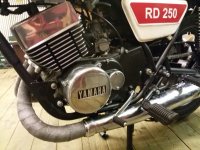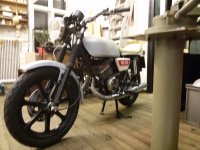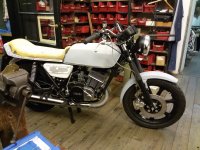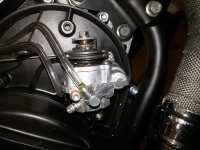You will have to research for yourself and decide on breaking in the new motor. I fall into the "break it in hard" camp, but I have my own compromises. Think I have said all this before, but as a rule I do 2 full heat cycles with no load. That is completely warming up the motor and letting it cool off with no dyno or riding. It is mostly just to check for leaks and re torque cylinder head bolts. First ride or dyno is immediately after warming up, and is hard ride through the gears maybe 80% then compression brake back down through the gears moderately. Repeat 4 or 5 times with a little bit of 100% and close to red line on the last iteration. The idea is to get combustion pressure behind the rings to push them hard against the cylinder wall to grind them together for the best seal, otherwise the cylinder wall can get polished and no longer grind the rings to get them to seal. I give copper head gasket RDs a super easy short ride first to re-torque the heads again and hope they seal before doing the break in. You will not have much trouble finding people that will claim this is all the worst process possible, so consider it accordingly.
Don't forget to use LOTS of oil for break in, and for maybe 300 to 500 miles after. Again, opinions vary.
Your pump looks like US pumps without the manual wheel to spin the pump. You will have to get your manual to check it, I think you rotate the pump to maximum stroke (you will have to use the kick starter lever to rotate the motor and hence, the pump) and check the gap between the cam and that big stainless washer with the throttle closed, and cable correctly adjusted, but check to be sure. I don't remember the gap measurement off hand. I suspect you are right though, probably never been touched since manufactured.
Don't forget to use LOTS of oil for break in, and for maybe 300 to 500 miles after. Again, opinions vary.
Your pump looks like US pumps without the manual wheel to spin the pump. You will have to get your manual to check it, I think you rotate the pump to maximum stroke (you will have to use the kick starter lever to rotate the motor and hence, the pump) and check the gap between the cam and that big stainless washer with the throttle closed, and cable correctly adjusted, but check to be sure. I don't remember the gap measurement off hand. I suspect you are right though, probably never been touched since manufactured.









